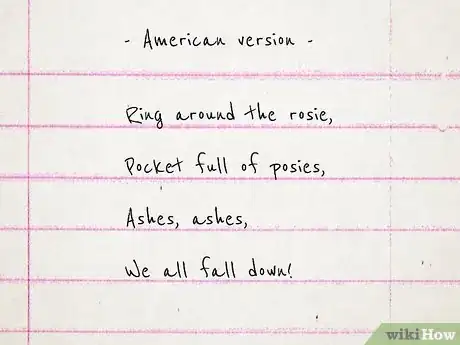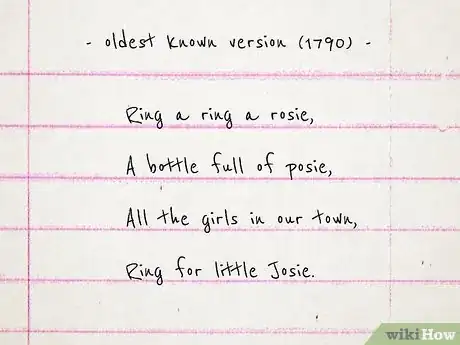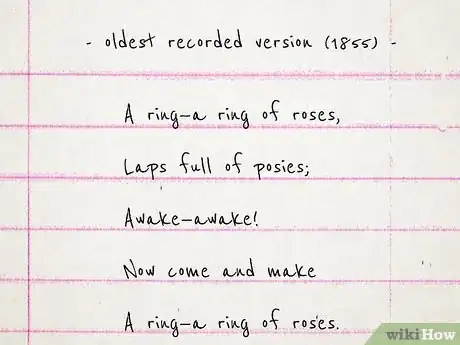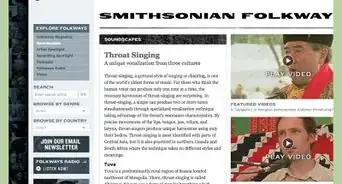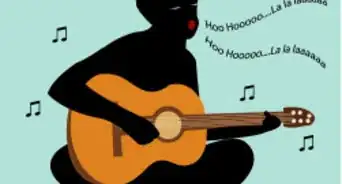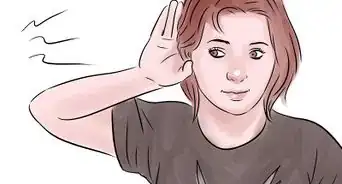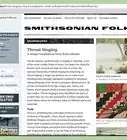This article was co-authored by wikiHow staff writer, Aly Rusciano. Aly Rusciano is a Creative Writer based outside of Nashville, Tennessee. She has over ten years of experience in creative, academic, and professional writing. Aly’s writing has been nationally recognized in the Sigma Tau Delta Rectangle and featured in Blue Marble Review, The Sunshine Review, PopMatters, and Cathartic Literary Magazine. She graduated from The University of Tennessee at Martin with a BA in English, focusing in Creative Writing and minoring in Theatre.
There are 10 references cited in this article, which can be found at the bottom of the page.
This article has been viewed 10,110 times.
Learn more...
“Ring Around the Rosie” is a classic nursery rhyme you’ve probably heard while walking past a playground. The playful, short song may bring back childhood memories of holding hands with your friends and spinning around and around in a circle. But what if this little melody wasn’t as innocent as you thought? Are the lyrics truly as sweet as they sound, or is there a dark meaning behind them? Keep reading to find out!
Things You Should Know
- “Ring Around the Rosie” may be an innocent child’s game, or it could be a lyrical allusion to the deathly plague of 1665.
- There are hundreds (if not thousands) of versions of “Ring Around the Rosie” out there, and their lyrics and interpretations may be affected by their publication dates.
- Read classic nursery rhymes with different contexts in mind to decipher the many interpretations and find allusions to historical events.
Steps
References
- ↑ https://www.nationalarchives.gov.uk/education/resources/great-plague/
- ↑ https://www.rmg.co.uk/stories/topics/great-plague
- ↑ https://www.pbs.org/wgbh/rxforsurvival/series/diseases/plague.html
- ↑ https://www.pbs.org/wgbh/rxforsurvival/series/diseases/plague.html
- ↑ https://www.jstor.org/stable/1499417
- ↑ https://kcls.org/content/ring-around-the-rosie/
- ↑ https://www.wordorigins.org/big-list-entries/ring-around-the-rosie
- ↑ https://www.wordorigins.org/big-list-entries/ring-around-the-rosie
- ↑ https://archaeologydataservice.ac.uk/archiveDS/archiveDownload?t=arch-457-1/dissemination/pdf/vol09/vol09_12/09_12_338_340.pdf


